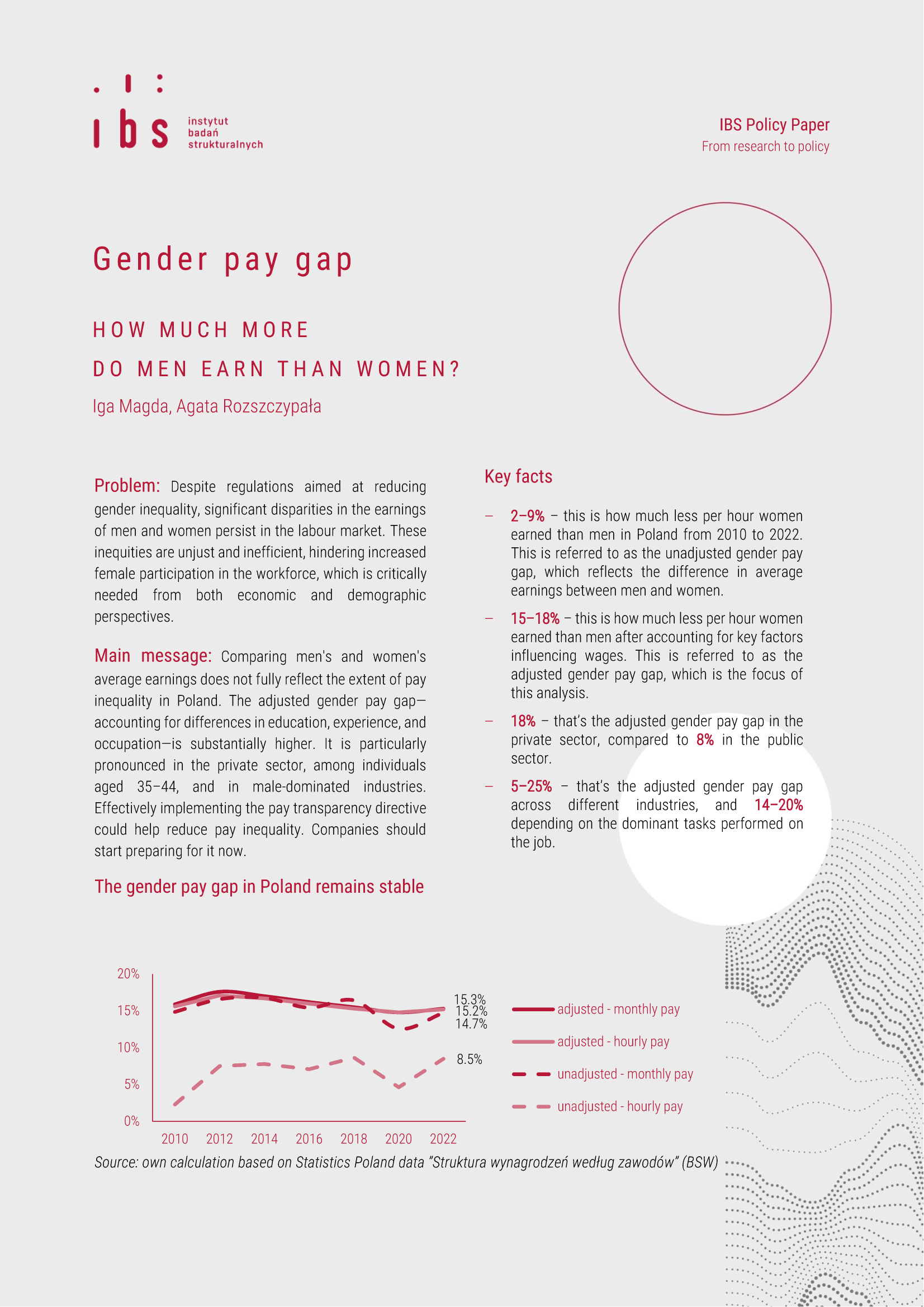Problem: Despite regulations aimed at reducing gender inequality, significant disparities in the earnings of men and women persist in the labour market. These inequities are unjust and inefficient, hindering increased female participation in the workforce, which is critically needed from both economic and demographic perspectives.
Main message: Comparing men’s and women’s average earnings does not fully reflect the extent of pay inequality in Poland. The adjusted gender pay gap—accounting for differences in education, experience, and occupation—is substantially higher. It is particularly pronounced in the private sector, among individuals aged 35–44, and in male-dominated industries. Effectively implementing the pay transparency directive could help reduce pay inequality. Companies should start preparing for it now.

The authors would like to thank Jan Rutkowski for his valuable comments.
The views expressed in this publication are those of the authors and do not necessarily reflect the official position of the Institute for Structural Research. All usual disclaimers apply.
* * *
The project is funded by National Science Centre, Poland, under the BEETHOVEN CLASSIC 4 (2020/39/G/HS4/03138).

